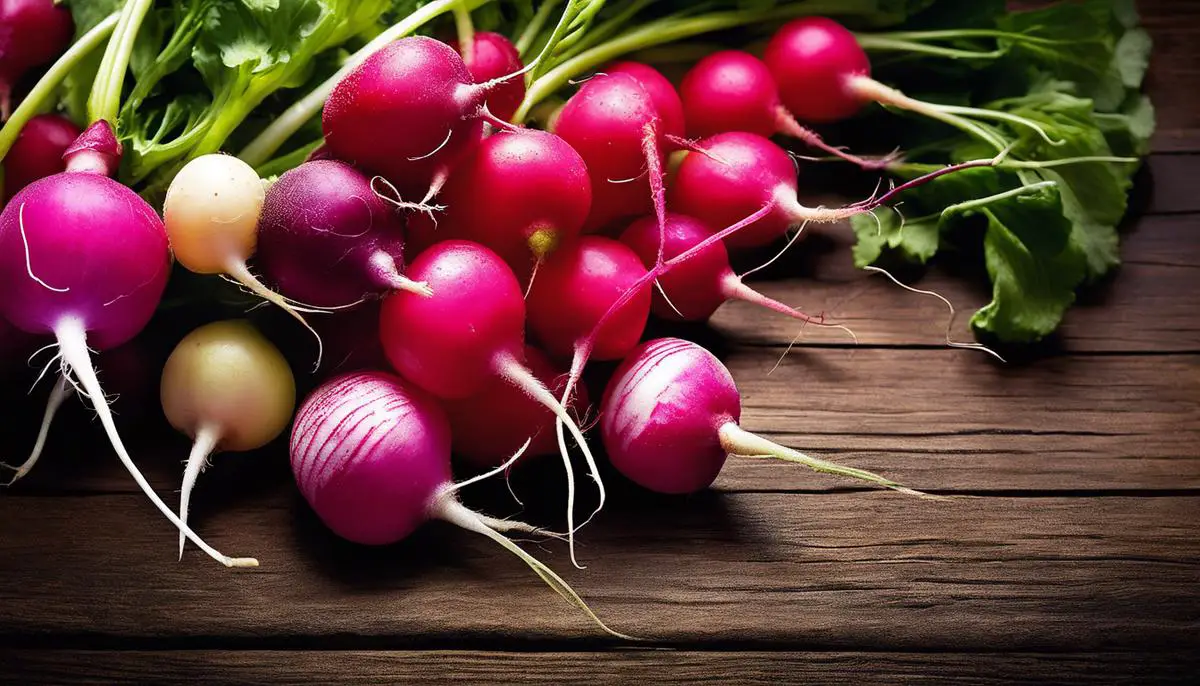Organic cultivation holds immense promise for a sustainable future in gardening, and growing radishes organically is a fantastic starting point. Radishes, with their crisp texture and peppery flavor, are versatile veggies that enrich any garden. This comprehensive guide will be your compass through the rewarding journey of organic radish cultivation. It offers detailed insights into the selection of radish varieties, perfect environment, soil preparation, planting procedures, organic pest control mechanisms, and disease prevention. Furthermore, it reveals the techniques of harvesting and storing radishes organically while promoting a holistic approach through companion planting and crop rotation.
Selection of Radish Varieties and Perfect Environment
Enthusiasts, hobbyists, and gardening aficionados, welcome on board! It’s time to delve into the exciting, vibrant world of organic radish cultivation. Gardening aficionados will tell you that successfully growing radishes is one invigorating way to acquaint oneself with the joys of organic horticulture. Understanding the ideal conditions and knowing the perfect radish varieties can turn this seemingly mundane task into an exploratory, rewarding journey.
Reader Poll: What online courses would interest you?
As a cold-season crop, radishes do best when introduced to the soil in cool climates. Looking for the ideal temperature range? One could say radishes love to chill, as they thrive in temperatures between 50 to 65 degrees Fahrenheit. But don’t underestimate these resilient, hardy little gems; radishes can withstand cooler climates and still pop a burst of color in your garden patch.
Good-quality, finely raked soil is fundamental for a triumphant radish crop. Loamy, well-draining soil with a pH between 6.0 and 7.0 offers an optimal growing environment. Under such conditions, radishes can avoid disease, pests, and some of those sneaky garden woes, leading to bountiful harvests.
A dedicated organic gardener understands the importance of a nutrient-rich soil. Adding organic compost or aged manure into the soil would provide steady nutrition; remember, radishes are fast growers and require these beneficial nutrients readily available.
Subscribe to our newsletter!
While radish varieties are perhaps as diverse as stars in the cosmos, there are some specific varieties ideal for organic cultivation.
Enter ‘Cherry Belle’, a variety popular for its bright red color and scrumptiously crisp texture. Noted for its resistance to pests and diseases, Cherry Belle is an excellent choice for organic gardens.
Next up is ‘French Breakfast’. Its intriguing oblong shape and distinctive red top, white bottom coloring make it a garden favorite. Plus, it’s notably disease-resistant, growing happily in organic soil.
For those who crave some spice, look towards ‘Sparkler White Tip’. This distinctive radish offers a punch of heat on the palate and, you guessed it, a sparkling white tip with a rosy red top.
Here’s a unique number: ‘Watermelon’. Just as its name suggests, this radish is green on the outside with a pinkish-red flesh that resembles a mini watermelon. Its sweet taste and crisp texture are an added bonus to its visual appeal.
A final matter to consider: water. A regular, consistent watering schedule is essential for uniform growth and reducing the chances of cracking or pithiness. About an inch of water per week should keep your radishes juicy and flavorful.
While this certainly isn’t an exhaustive guide to radish cultivation, these tried-and-true tips should set any organic radish growing journey onto the path of success. Happy gardening, radish enthusiasts! Let the subtle crunch and zingy zest of your very own home-grown, organic radishes reflect the wealth of knowledge and passion you’ve put into them. After all, the joy of gardening goes beyond the harvest; it’s in the process itself. Here’s to the quiet thrill of observing, tending, and above all, growing!
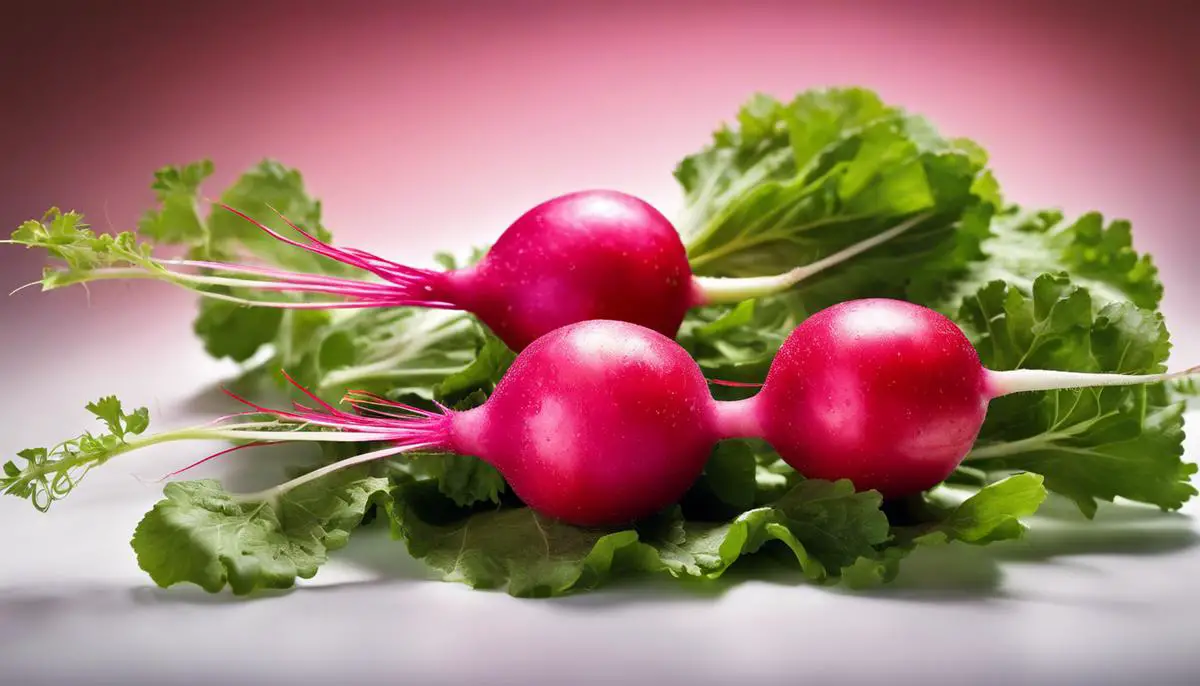
Preparation of Organic Garden Soil and Radish planting
Achieving Optimal Soil Preparation and Planting Techniques for Organic Radish Cultivation
Success with organic radish cultivation comes from an intricately balanced dance between soil preparation and careful planting. Optimal garden soil prepping is a foundational step that significantly influences the growth of these nutritious, crunchy delights. It’s a hobby that’s more than just playing with mud and seeds; it’s about creating a nurturing environment for your radishes to thrive in.
Rich, well-draining soil is crucial for radish growth. One of the keys to achieving this texture is adding organic matter into your garden patch. Organic compost or well-rotted manure can jolt life into the soil by improving its structure and boosting nutrient levels. Turn this into the top few inches of your garden soil, making it welcoming for those radish seeds. This nurturing bed also needs to be free of rocks and debris, so those future radishes can grow unimpeded.
Maintaining your garden soil’s pH is another critical factor. Radishes prefer a slightly acidic to neutral pH – around 6.0 to 7.0 – for optimal growth. Regular soil testing can ensure the pH stays within this optimal range, making any necessary adjustments a cinch. Products such as lime can raise a too-acidic soil pH, while sulfur can lower a too-alkaline level.
Let’s turn to the rewarding act of sowing the radish seeds themselves. Creating small furrows in the prepared soil about 1/2 inch deep is the first step. Spacing these furrows about a foot apart gives each radish plenty of room to grow. Then it’s sowing time. Drop one or two seeds at an interval of every inch or so. This method discourages overcrowding and prompts even growth. Afterward, lightly cover the seeds with soil and water gently.
During the entire cultivation process, maximizing sunlight exposure is crucial. Radishes love the sun, and a spot that gets at least six hours of sunlight a day is ideal. Keep an eye on the weather, though. A harsh afternoon sun might need softening by a slight shade.
Remember to regularly weed your radish patch. Nothing should compete with your radishes for nutrients, water, or sunlight. However, be cautious not to disturb the delicate roots of the radish plants while weeding.
Rotating crops in your vegetable patch is another trick to ward off diseases and pests. Following radishes with a different crop can ensure the soil balance is maintained, and the radish patch stays vibrant and productive.
The gratification of watching those plump, colorful radishes pop out of the dark earth is something that every organic gardening enthusiast should experience. A well-prepared soil bed and mindful planting make it all possible. Radish cultivation is not just about the end product, but about the process – sometimes slow-paced but always rewarding. And remember, the best radishes are not bought; they’re grown. Happy gardening!
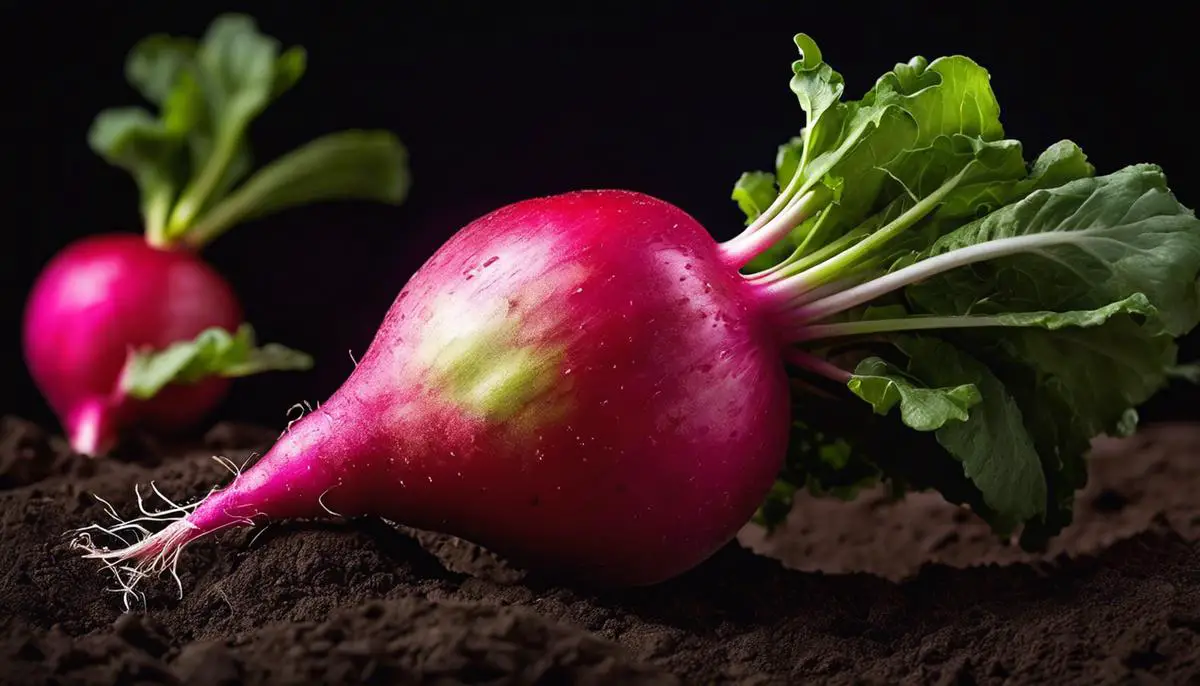
Organic Pest Control and Disease Prevention for Radishes
Ladies and Gentleman, let’s pivot our focus toward a phase that’s begged our attention: dealing with pesky pests and dreaded diseases that pose threats to thriving, organic radish cultivation. We all agree that we want robust radishes, so let’s shield our crops in ways that work— naturally!
First off, let’s chat about companion planting. This is a savior practice for any organic garden. Pairing radishes with peas, nasturtiums/potatoes, or even cucumbers isn’t just about creating a diversified garden. It’s a natural technique aimed at warding off aphids, beetles, and borers. These sidekick plants emit scents that can deter pests, protecting your radishes more effectively.
Next, let’s not overlook the value of a healthy magnetic force- birds. Install birdfeeders near your radish beds and enjoy the spectacle! Our feathered friends can help control caterpillars, beetles, grubs, and other insects that can harm your radishes.
Remember, healthy soil fosters healthy plants, and healthy plants are better at resisting disease. So, how can we naturally ward off diseases? To start with, try to include mulching in your gardening routine. Mulch will not only keep the soil moisturized and cool but also break down over time, adding valuable organic matter back into the ground. A bonus being, it can deter certain pests as they have a hard time crossing the mulch barrier!
Crop rotation can be a potent weapon against soil-borne diseases and pests. It interrupts the life cycle of pests and the development of diseases, ensuring the safety of future radish crops. Rotate radishes with beans or peas; this helps replenish the nitrogen that radishes deplete.
Going organic means saying no to synthetic pesticides and chemicals. Instead, turning towards amazing natural concoctions like garlic, pepper, onion, soap spray, diatomaceous earth, even beneficial nematodes, to deal with these issues could be quite effective!
Foliar sprays are another marvellous technique to protect your radishes while preventing diseases. The concoction is straightforward: compost tea, seaweed extracts, yeast extracts are good options, when sprayed directly on the leaves, can boost plant immunity, curb diseases, while also warding off pests.
To manage fungal diseases, applying sulfur or copper-based fungicides as preventive treatments can be beneficial. Use them early in the spring. These are considered appropriate for organic cultivation and are readily available in gardening centers.
Monitoring is key! Regular inspections of your garden will surely save you a lot of disappointments. From observing the color and size of leaves, watching for holes or lays, splotches on the plant, be the garden’s investigator! Early spotting signs of disease or the presence of pests can facilitate timely and effective control measures.
And guys, remember the most vital thing: Mother Nature does a solid job maintaining equilibrium. If something is amiss, become the Sherlock for your patch: investigate! Adopt one or more of these solutions and surely, your radish troops will stay battle-ready against the invasion of pests and disease. Let’s grow turnips the organic way – naturally nurtured, power-packed with health, and incredibly flavorful! Happy radishing, my friends!
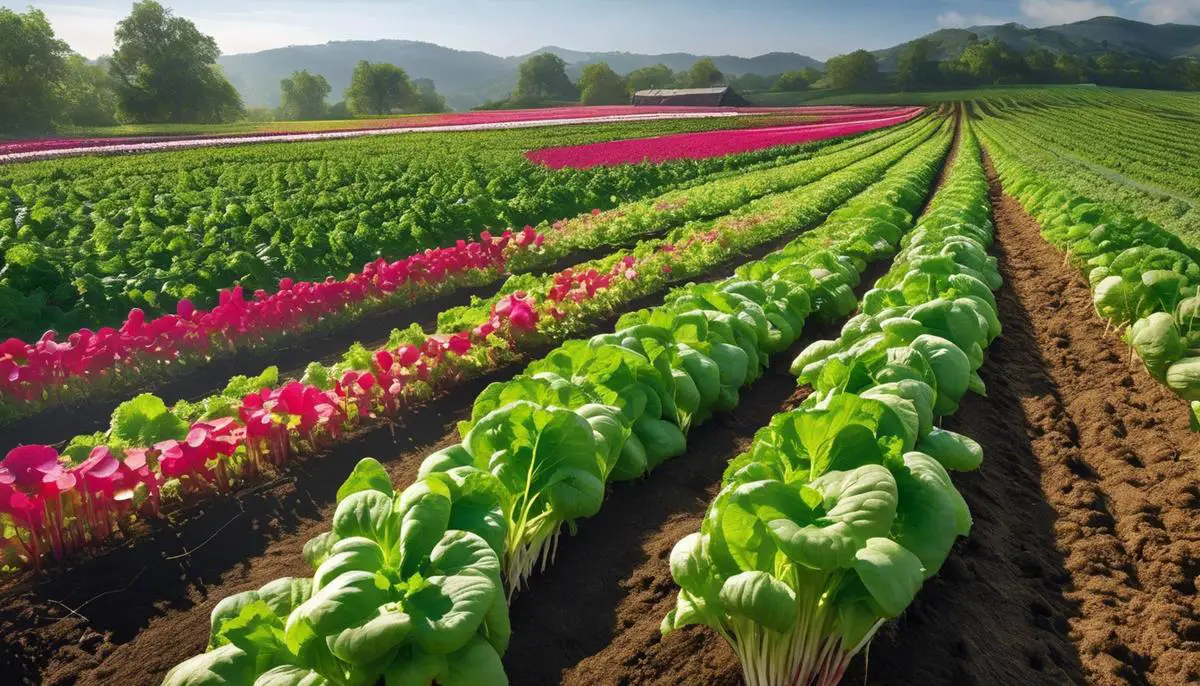
Harvesting and Storing Radishes Organically
Now that we’ve digested the foundational aspects of organic radish cultivation, it’s pivotal to uncover the enlightening world of radish harvesting and storage. This phase is just as much an art as the previous steps, requiring timing, care, and the application of sage gardening wisdom.
Probably one of the most exciting aspects of radish cultivation is recognizing the perfect harvesting time. Most radish varieties mature quickly, becoming ready for harvest in just 3-4 weeks after planting. Their quick maturing time requires monitoring, with daily checks becoming necessary as they near peak ripeness. Checking the radish size frequently gives the best insight into their readiness. A radish whose top is approximately 1 inch in diameter, poking out above the soil, is typically ripe for picking.
As a guideline, radishes tend to have the crispest texture and boldest flavor when harvested on the smaller side, but choosing the right moment let’s each gardener put a bit of their personal flare into the hobby. A balance needs to be struck however, as oversized radishes may become woody and lose their distinctive flavor.
Timing takes center stage not just during the day but also across seasons. For spring planted radishes, harvesting should ideally happen before the heat of the summer kicks in to prevent the radishes from becoming overly spicy and woody. For fall crops, harvesting before the deep frost sets, is strategic to keep the radishes firm and crunchy.
But what to do post-harvest? Proper storage is the key to savoring this quick-to-grow delight. The first step is to remove the radish greens, leaving about an inch of stem on the top. This helps in preventing moisture loss, keeping the radishes fresh and crisp while stored.
For short term storage, unwashed radishes can be placed in perforated plastic bags and stored in the refrigerator. They’ll maintain their crisp texture for a week or two in this setup. For extended storage over the winter, radishes can be stored in a cool, humid location such as a root cellar or a buried container. Here, the radishes should be packed in damp peat moss or sand to prevent them from drying out.
Unlike many fruits, radishes do not continue to ripen after harvest, so their flavor will remain stable. This feature allows savvy gardeners to enjoy the fresh crunch of their radishes for many weeks after harvesting. Always remember, though, that organic radish cultivation doesn’t end with harvesting and storage. It’s a continuous cycle that involves ongoing learning and adaptation. An ever-enthralling world to discover, one radish at a time.
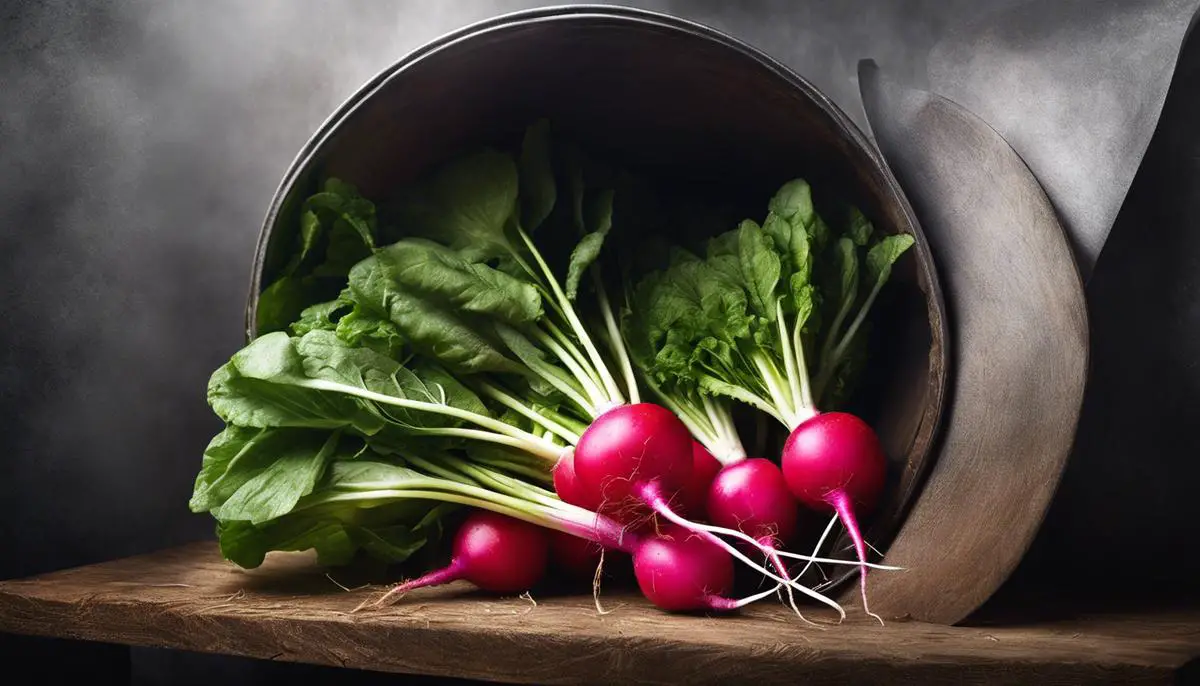
Companion Planting and Crop Rotation for Radishes
The integration of companion planting and crop rotation tactics are not only beneficial—they’re downright genius for those truly passionate organic radish cultivators. This dynamic duo—companion planting and crop rotation—takes the radish cultivation to an entirely new level, brimming with an increased vitality of plants and improved productivity.
Companion planting is the natural version of the saying, “I scratch your back, you scratch mine.” A fantastic way to maximize the efficiency of your radish garden, companion plants either help each other grow or protect each other from pests. So what are radishes’ best friends? Peas, lettuce, and nasturtiums make excellent companions. They have a symbiotic relationship with radishes. While radishes deter many pests which could harm these plants, the latter improves the soil’s nutrient content, enhancing radish growth.
Tip: Remember, the key to successful companion planting is understanding which plants help one another, so play the matchmaker wisely. Pair radishes with plants that do not impede their growth path—potatoes and hyssop, to name a couple, are big no-nos.
Moving on to the other half of this high-yield duo—crop rotation. This traditional method has been used for centuries to maintain soil fertility and health. Crop rotation is precisely what it sounds like: rotating your radish crop placement from season to season. This simple technique helps manage soil fertility and also helps mitigate pests and diseases.
For instance, one can plant radishes after beans; beans are natural nitrogen-fixers, meaning they help enrich the soil with nitrogen—a nutrient essential for radishes’ healthy growth. After rotating crops, the soil gets a well-deserved break, bestowing it with ample time to regain its nutrients.
Another advantage? It keeps pests on their (hind) legs. Many pests and diseases tend to cling on to specific plants. If you shake things up and plant different species from one season to another, the pests are less likely to establish a stronghold.
But that’s not all. Stranded pests could become useful food sources for other organisms, helping foster biodiversity. This further promotes the health of the topsoil and contributes to the whole cycle of life in your garden. Now isn’t that something?
For gardeners and radish enthusiasts, the combination of companion planting and crop rotation turns out to be a savvy approach to sustainable farming. These methods enhance not only the yield but also the quality of radishes. So why wait? Let’s start plotting our radish companions and rotating our crops to bask in the superior goodness of home-grown, organic radishes. Happy gardening, everyone!
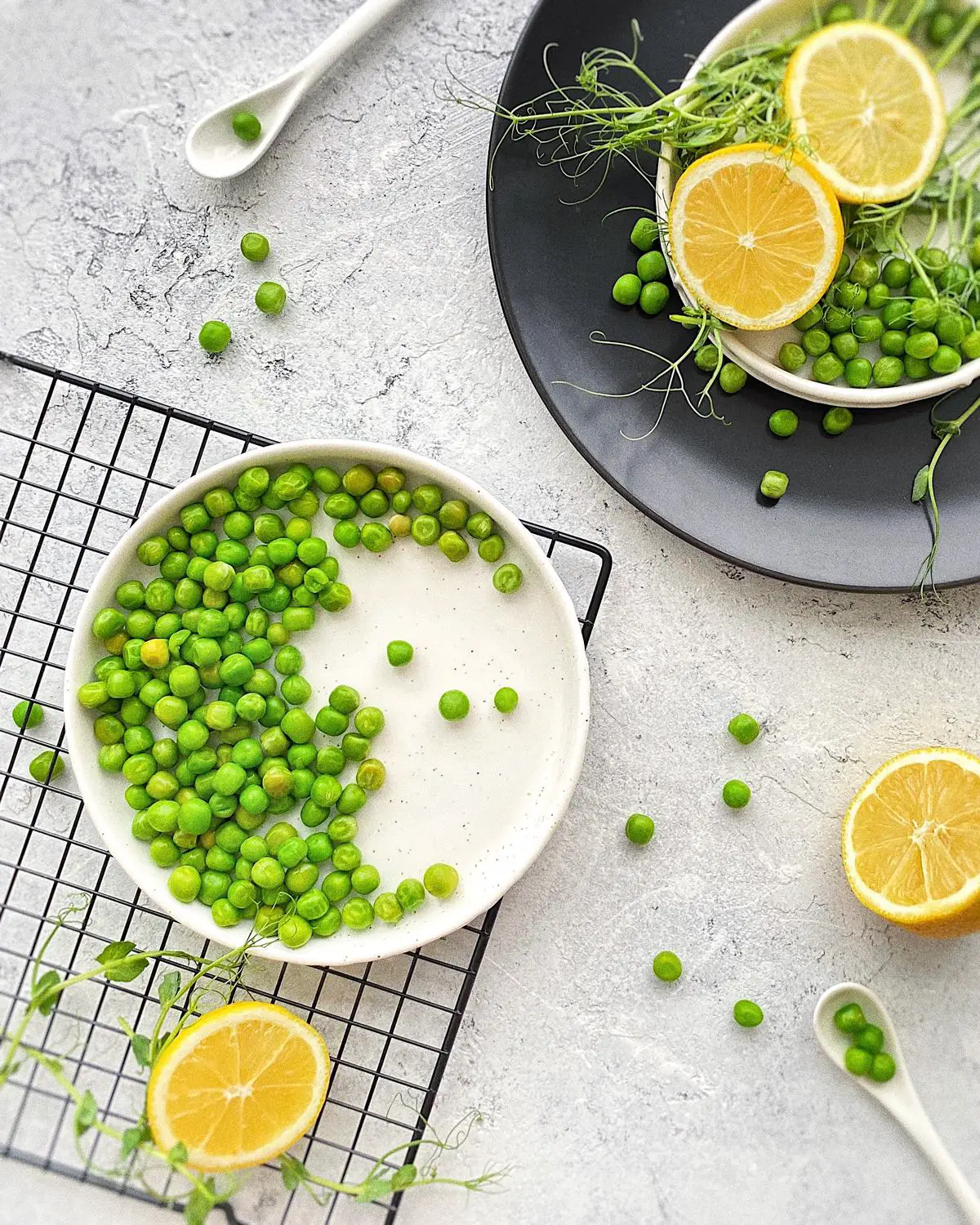
The organic cultivation of radishes is an exciting endeavor that intertwines with nature’s rhythm as we deliver nutritious, rich produce. Our approach to organic gardening should be as diverse as the radish varieties we plant. It’s the collective implementation of soil preparations, planting, caring, harvesting, and storing methods that brings success. Additionally, the sustainable practices of companion planting and crop rotation will ensure the longevity of your organic garden. May this detailed guide be your companion, accompanying you on this fulfilling gardening journey, encouraging you to delve deeper into the enchanting world of organic cultivation.

